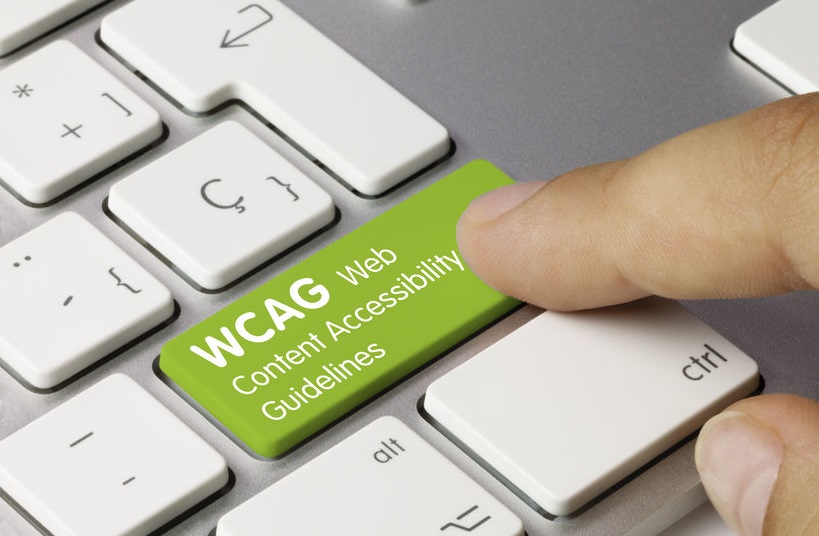

WCAG 3.0 is now here! On 21 January 2021, the World Wide Web Consortium (W3C) published the First Public Working Draft of the WCAG 3.0 (web content accessibility standards and recommendations), also known as the Silver Project.
This project arose with an aim to seek out the opinions of evaluators, developers, designers, project managers, policy makers, and people with disabilities on the structure and draft of the model.
The first thing we need to bear in mind in order to understand the essence of this event is that the W3C Accessibility Guidelines (WCAG) 3.0 have arrived with a series of recommendations to make web content more accessible to users with disabilities.
This time, the proposal centres on offering more effective solutions to many of the needs that still exist for users with disabilities.
To do so, different types of web content are being taken into account, namely, static, interactive, visual and audible content, as well as virtual and augmented reality. Various related web tools are also being studied, such as user agents (browsers and assistive technologies), content management systems, auditing and testing tools.
What is the aim of the W3C Accessibility Guidelines (WCAG) 3.0?
WCAG 3 aims to be easier to understand and more flexible than WCAG 2. Its revamped flexibility will address different types of web and digital content, applications, and tools, and will also cover a broader group of people with disabilities. This work is offered under a new name, scope of application, structure, and conformance model that differs from past models.
The goal of the Silver Project is to provide solutions to a wider range of user needs, and disabilities in particular, using new approaches to testing and enabling a more up-to-date maintenance of web accessibility guidelines, in order to keep pace with constant technological change.
It bears mentioning that the WCAG 3.0 supports these changes, focusing even more on the functional needs of users. The idea being that the results and methods afforded by the technology are specifically oriented to these needs and able to satisfy them.
If we follow these guidelines, content will be more accessible to people with disabilities such as blindness, poor vision, and other vision impairments; deafness and hearing loss; limited movement and dexterity; speech impairments; sensory processing disorders; cognitive and learning disabilities; as well as any combination thereof.
The key here is that by meeting these guidelines, not only will we make content more usable for users in general, but also accessible to people with disabilities.
What’s new in the W3C Accessibility Guidelines 3.0
The WCAG 3.0 model is designed to provide better coverage across disabilities and be easier to maintain, so that the new standard will be more enduring over time as technologies evolve.
Earlier versions offered a model that kept them relevant for more than 10 years. Nevertheless, the evolution of technology and the changing needs of people with disabilities require a new model that can address web content accessibility in a way that is more comprehensive and flexible.
There are many differences between the WCAG 2.0 and WCAG 3.0 guidelines. Content that conforms to WCAG 2.2 A and AA guidelines is expected to meet most of the minimum conformance level of this new standard, but, since WCAG 3.0 includes additional tests and different scoring mechanics, additional work will be needed to achieve full conformance.
After exhaustive research which included a literature review as well as interviews, surveys, and self-reporting with people with disabilities, content developers, quality assurance professionals, tool developers, designers, and policy makers, it was found that the majority of the opportunities were related to changes in the structure and presentation of accessibility guidance to:
- Improve usability, especially for beginners;
- Support disability needs that cannot be tested by true/false success criteria; and
- Facilitate maintenance to keep guidelines more current.
For the last seven years, inSuit has been aligned with WCAG 3.0
WCAG 3.0 uses a model that addresses more disability needs than WCAG 2.0, along with publishing requirements and emerging technologies such as Web XR (augmented, virtual and mixed reality) and voice input.
In this sense, the Silver Project is expected to make it significantly easier for both beginners and experts to create accessible digital products that satisfy the real needs of people with disabilities.
Meanwhile, and given that the new standard will use a different conformance model, the Accessibility Guidelines Working Group expects that some organisations will continue to use WCAG 2.0, while others will consider migrating to the new standard as soon as possible.
What is certain is that for seven years now,inSuit has been aligned with the principal innovations of WCAG 3.0. From the very beginning inSuit has positioned itself as a pioneer in this regard, putting users with disabilities at the core of its work. As a result, it will be easier for inSuit to meet the rest of the Silver Project recommendations, beyond incorporating new content formats.
We can safely say that from the outset inSuit was already aligned with WCAG 3.0, and now it is the standard itself which has to adapt to the innovation of solutions such as inSuit.
Would you like to know how to make your website accessible? Request your free web accessibility audit!


